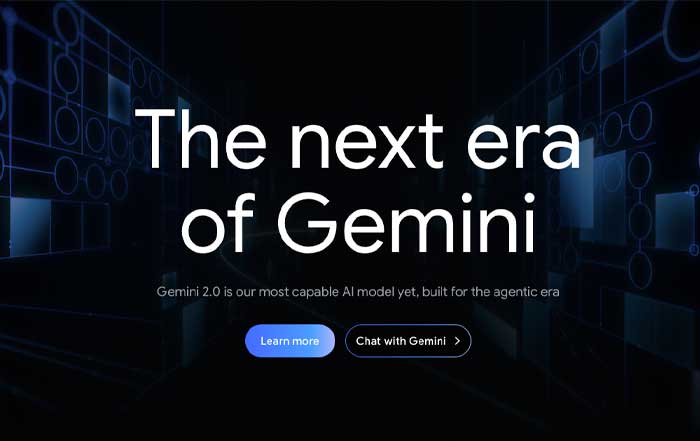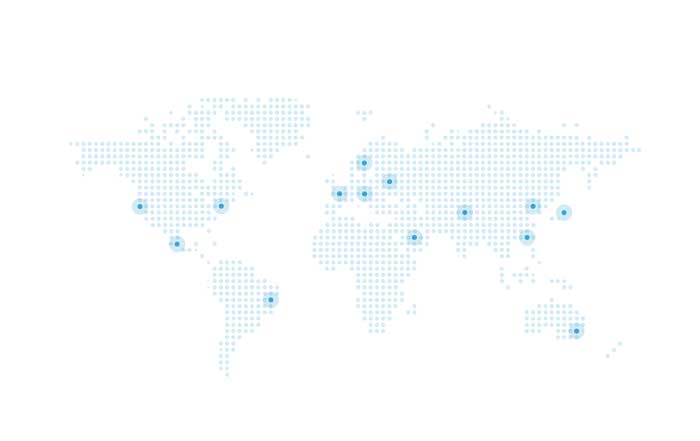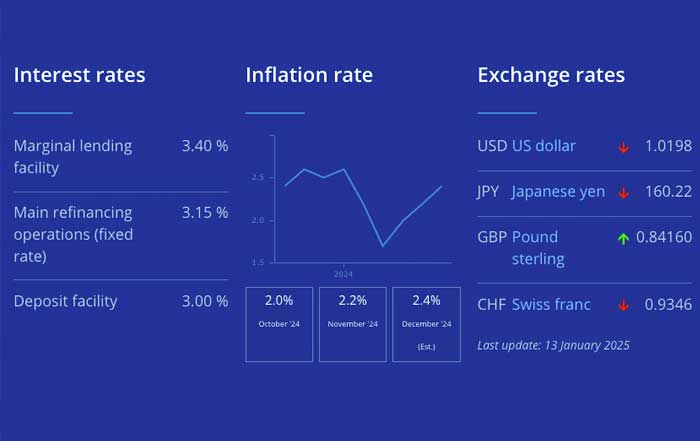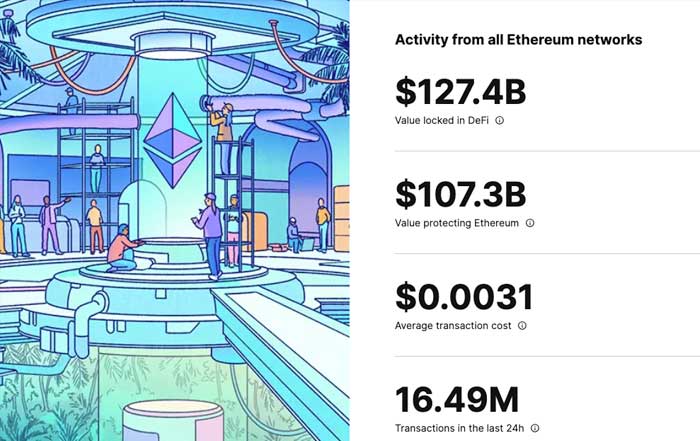Artificial intelligence has traveled a remarkable trajectory in recent decades, advancing from a purely theoretical realm into an indispensable asset for global industries. By 2025, the financial services sector has become one of the most prominent arenas for this transformative technology, with AI agents taking center stage in both banking and payments. Their evolving capacity to interpret data, make predictions, and interact with people through natural language processing is revolutionizing how institutions operate and how customers experience financial products. From delivering highly personalized recommendations to automating regulatory compliance, AI agents have become an intrinsic part of next-generation finance, guiding institutions into a new era of seamless functionality, enhanced trust, and unparalleled efficiency.
These intelligent systems no longer serve as peripheral tools but rather as central pillars underpinning core banking operations. They offer decision-making prowess in risk assessment, verify customer identities in the blink of an eye, and detect patterns in financial data that would remain invisible to human scrutiny. Such abilities are propelling traditional institutions to adapt and innovate, ushering in a wave of competition with fintech challengers that are leveraging AI for everything from automated investment advice to simplified foreign currency transfers. Indeed, the sheer momentum behind these developments points toward a financial ecosystem that will soon be defined less by brick-and-mortar branches and more by agile, intelligence-driven processes designed for the demands of a digitally focused clientele.
While the potential for growth is vast, the presence of AI agents in banking and payments also raises complex questions around transparency, data security, and fairness. As organizations race to adopt advanced technologies, they must tackle issues related to privacy, regulatory compliance, and the ethical use of machine-driven insights. Regulators in various jurisdictions have already begun implementing stricter oversight, mandating robust cybersecurity frameworks and the transparent use of customer data. Balancing innovation with accountability is a core challenge, and institutions that deftly manage this balance are poised to earn both market leadership and consumer loyalty.
Many of the innovations now being scaled at major banks were pioneered by smaller technology companies. Fintechs, through agile experimentation and niche specialization, have rolled out AI-based products at unprecedented speeds, setting new standards for responsiveness and functionality. In response, large financial institutions are either collaborating with these fintech players or making substantial in-house investments to refine and expand AI capabilities. This dynamic interplay of traditional banks, fintech disruptors, and big tech companies has ignited a flurry of partnerships and mergers, all aiming to carve out leadership positions in a rapidly changing market.
A wide range of initiatives highlight the immense breadth of possibilities. Automated wealth management platforms can create curated investment strategies for individuals with distinct financial goals, while conversational agents deliver round-the-clock customer support, offering advice that factors in real-time market conditions. In the realm of payments, AI is guiding everything from instantaneous settlement to smart routing of cross-border transfers at lower fees and with increased transparency. These breakthroughs are not limited to customer-facing applications: banks increasingly rely on AI for tasks that run behind the scenes—credit scoring, transaction monitoring, fraud prevention, regulatory reporting, and more.
In many ways, the rapid evolution of AI in finance speaks to the industry’s willingness to adopt technologies that offer extraordinary value. Yet the global shift toward AI-driven methodologies has also underscored the urgent need for skilled talent, new governance models, and updated infrastructure. Data scientists, machine learning engineers, and AI ethicists have become essential roles, while specialized cloud-based tools—such as those featured on OpenAI and Claude.ai—enable banks to train and deploy intelligent models at scale. As banks expand their portfolios, they find themselves juggling between robust innovation and the pressing responsibility to safeguard consumer trust and comply with evolving regulations.
In the midst of this dynamic ecosystem, AI agents are shaping what many now regard as the future face of global finance. These systems learn continuously from vast and diverse data sets, offering analytical insights that drive more precise risk models, better engagement strategies, and resilient digital payment platforms. Although challenges abound—from data breaches to unintentional biases in algorithms—the momentum behind AI suggests that its integration into banking and payments is far from a passing trend. Instead, it has become a keystone of progress, promising to reimagine monetary transactions and help institutions stay competitive in the world of 2025 and beyond.
The Historical Context of AI in Financial Services
AI’s entrance into financial services was initially characterized by skepticism and limited real-world adoption. Early research from the 1950s and 1960s hinted at the grand potential of machines to emulate human reasoning, yet practical applications remained elusive for decades. By the early 2000s, incremental improvements in computing power began allowing advanced algorithms to handle the colossal volumes of data generated by financial institutions. However, the progress was cautious, with many banks using AI purely for select back-end processes like early-stage fraud detection or rudimentary credit scoring. It took time, substantial budget allocations, and incremental successes for AI to evolve from a novelty into a must-have technology.
Over the last two decades, the drive toward digitization and the explosion in data volumes fueled further research, culminating in more sophisticated machine learning models capable of handling complex prediction tasks. The year 2025 now stands as a tipping point, where AI is no longer perceived as just a cost-cutting measure but as a strategic necessity. Those initial pilot programs and proof-of-concept studies that once seemed experimental have now matured, giving rise to institution-wide deployments that streamline workflows and generate tangible value.
What truly shifted the perception was the realization that AI could do more than simply process large datasets—it could interpret those datasets and deliver actionable insights that revolutionize customer-facing products and services. Banks recognized that aligning their strategies with AI’s analytics capabilities could drive innovation, capture new market segments, and secure competitive advantages. Market pioneers that took the initiative to integrate AI quickly reaped the rewards, both in customer satisfaction and operational efficiency. This, in turn, pressured smaller players and late adopters to keep pace, creating a virtuous cycle of widespread AI adoption across the financial landscape.
Financial institutions are increasingly partnering with specialized AI labs, research hubs, and start-ups to expand their capabilities in areas like predictive analytics, anomaly detection, and user-centric product design. Collaboration has become a standard approach, as large-scale banks tap into specialized fintech expertise while early-stage companies gain access to the vast datasets and customer bases of established institutions. This confluence of resources accelerates the development of new use cases, from AI-driven underwriting in insurance to self-executing smart contracts that reduce the friction traditionally associated with manual processes.
In parallel, the global regulatory environment has been adapting to manage potential risks. While some regions have introduced prescriptive guidelines on AI usage, others have taken a more principles-based approach, encouraging responsible innovation. In all cases, the goal remains consistent: to maximize the societal and economic benefits of AI while minimizing harm to consumer data and ensuring fair access to services. Looking ahead, institutions recognize that alignment with these regulations is not just a legal requirement but also a reputational imperative. In an industry built on trust, meeting the highest standards of transparency and data governance can be the deciding factor that distinguishes a leading financial institution from one that struggles to evolve.
In just a few decades, AI has gone from an uncertain experiment to a foundational platform that banks now rely upon daily. It has reinvented critical processes, paving the way for new models of financial intermediation and collaborative ecosystems involving diverse stakeholders. The year 2025 has proven to be a watershed moment for AI in finance, solidifying the technology’s status as not just a tool but a key enabler of transformation that will shape the economic and social fabric for years to come.
AI Agents Transforming Banking Services
Enhancing Customer Experience
At the forefront of AI’s integration into banking is its capacity to deliver highly intuitive and immersive customer experiences. Gone are the days when customers waited on hold for human representatives or navigated clunky websites to complete routine transactions. Now, sophisticated AI-driven chatbots and virtual assistants are capable of understanding natural language queries, providing financial advice, and even preemptively identifying the services each customer is likely to need based on historical data and real-time engagement patterns.
These AI agents serve as the initial point of contact in various channels, including mobile applications, web-based portals, and phone support. Rather than passively waiting for instructions, modern AI assistants can proactively guide customers through important tasks, such as setting up a budgeting plan or exploring new investment opportunities. For example, a user who consistently exhibits a pattern of high spending during certain times of the year could be notified about potential budget shortfalls before they occur. Similarly, individuals looking to manage a short-term loan might receive recommendations for alternative credit products that better suit their needs, with the AI highlighting cost-saving advantages.
Large financial institutions have also begun offering sophisticated voice-based interfaces, which allow for more conversational and convenient interactions. These systems can recognize nuances in speech, adapt to a customer’s communication style, and even respond to emotional cues. They are integrated with robust data analytics engines that reference a user’s transaction history, credit score, and market conditions to generate tailored advice in real time. The result is an interactive experience where customers feel that their bank understands their unique financial situation, fostering greater trust and satisfaction.
Another critical benefit of AI-driven customer experience is its high-level availability. Service is no longer constrained by business hours; AI agents are accessible around the clock, which is especially valuable for customers managing their finances across multiple time zones or requiring assistance in urgent scenarios. When a transaction fails due to suspicion of fraud, the AI can swiftly notify the account holder, verify identity through advanced authentication processes, and restore access without delay. This near-instant response time helps mitigate the frustrations that often arise from traditional customer support channels, strengthening the relationship between customers and their financial institutions.
Nonetheless, banks must remain vigilant about potential pitfalls. While AI chatbots excel at many tasks, they can still struggle with complex or ambiguous questions that require nuanced human understanding. Recognizing these limitations, many institutions employ a hybrid approach, allowing AI to handle straightforward issues while seamlessly handing off more complex matters to human experts. This balanced strategy not only ensures that customers receive the best possible support but also harnesses the efficiency gains that AI can bring.
Overall, AI’s role in elevating customer experience reflects a broader trend toward personalization and immediacy in the financial realm. Whether it is recommending products that match spending behavior or offering real-time financial education, AI agents are reshaping the conventional touchpoints between banks and their clients. In 2025, these interfaces are more intuitive, empathetic, and context-aware than ever before, marking a significant transformation that resonates across all segments of the banking industry.
Fraud Detection and Security
As financial institutions scale digital offerings and process voluminous numbers of transactions daily, the risk of fraud has grown both in complexity and in scope. Traditional rule-based systems, while effective for simpler schemes, often fall short in detecting sophisticated, rapidly evolving threats. AI agents have emerged as formidable tools for identifying fraudulent patterns, utilizing advanced machine learning and anomaly detection to examine masses of transaction data in real time. By cross-referencing customer behavior against historical profiles and known fraud signatures, these systems can issue instantaneous alerts when they detect suspicious activity.
The power of AI in fraud detection extends beyond speed and accuracy; it also lies in the technology’s capacity to learn and adapt continuously. Modern machine learning models iterate on new data, refining their detection criteria and becoming ever more precise as time goes on. This agility is indispensable in the face of cybercriminals who constantly develop new methods to bypass conventional defenses. Dynamic algorithms can, for instance, pick up on subtle shifts in spending patterns—such as unusual transactions in foreign countries or abrupt changes in typical purchase amounts—and swiftly freeze or flag the account for investigation.
Biometric authentication has also become more prevalent, with AI systems analyzing fingerprints, facial recognition, or voice identification to confirm a user’s identity. By combining these biometric factors with behavioral indicators, such as keystroke dynamics or the angle at which a mobile device is held, financial institutions can reinforce security on multiple levels. These approaches significantly reduce the risks associated with password theft or other forms of credential compromise, as malicious actors would need to replicate not just personal information but also the unique behavioral patterns that AI monitors.
Security enhancements are also visible in internal processes. AI-driven surveillance tools audit vast sets of employee transactions and communications to flag potential insider threats, ensuring that unauthorized access or manipulations are caught early. Compliance teams employ these tools to maintain an up-to-date understanding of potential vulnerabilities, from overlooked server misconfigurations to irregular data flows. The granularity of AI’s monitoring capabilities allows institutions to detect anomalies even in remote or siloed departments, effectively creating a high-level security net that alerts managers to potential breaches before they escalate.
Despite these advancements, maintaining customer trust requires more than just deploying cutting-edge AI tools. Institutions must also articulate transparent data-handling policies and establish governance models that define how AI processes sensitive information. Where possible, some banks even offer customers real-time updates on how AI is safeguarding their accounts, reinforcing the message that the technology is there to protect them rather than to intrude on their privacy.
The ongoing evolution of fraud detection and security measures highlights AI’s fundamental role as a shield for the digital finance era. By aligning advanced machine learning techniques with robust data governance, banks are devising versatile defenses capable of handling both present and emerging threats. As 2025 unfolds, it has become increasingly clear that AI is not just a supplementary measure for fraud prevention; it is a cornerstone technology that protects financial institutions’ reputations, ensures the integrity of customer assets, and fortifies the trust that underpins modern banking ecosystems.
Streamlining Back-Office Operations
While AI’s most visible impact often manifests in customer-facing applications, a quieter but equally transformative revolution is taking place behind the scenes. Back-office operations, which have traditionally relied on time-consuming manual processes, are experiencing a wave of automation powered by AI agents. Activities like document verification, data extraction, reconciliation, and regulatory reporting are undergoing radical optimization, dramatically cutting operational costs and enhancing precision.
Robotic Process Automation (RPA) has been a critical driver of these changes. Initially focused on automating routine tasks, RPA evolved to incorporate AI components that could handle more sophisticated functions like interpreting unstructured data in emails, understanding context in legal documentation, and routing information to appropriate departments. The result is that processes once scattered across disparate teams—often involving substantial paperwork—are now orchestrated by AI systems capable of completing them swiftly and accurately.
One especially impactful use case is found in mortgage applications, where borrowers often submit extensive documentation ranging from pay stubs and tax returns to property appraisals. Previously, underwriting teams spent a considerable amount of time reviewing each applicant’s file for compliance and accuracy. By 2025, AI systems have become adept at extracting the relevant information from these documents, verifying consistency, and even cross-referencing them against external databases to detect discrepancies or indicators of potential fraud. This level of automation significantly shortens the application cycle time, benefiting both the institution and the applicant.
AI is also streamlining risk assessment models, aiding financial institutions in determining capital reserves and monitoring credit portfolios. Powered by predictive analytics, these systems continuously ingest data from diverse sources—market trends, consumer behavior, socio-economic indicators, and more—to generate insights that inform strategic decisions. By automating risk analysis, banks not only reduce the margin of human error but also gain more nuanced visibility into emerging trends, enabling them to respond to market shifts in real time.
Regulatory compliance stands out as another critical area receiving attention from AI. Financial institutions are subject to numerous requirements and must produce detailed reports for multiple oversight entities. Failing to comply can lead to hefty fines and reputational damage. AI-driven tools automate the generation of these reports, ensuring that each document meets the strict formatting and data accuracy standards demanded by authorities. They also automatically track changes in regulations, updating internal processes and documentation accordingly. This seamless integration of compliance into daily workflows not only saves time but also fosters a culture of accountability, as employees rely on real-time dashboards that highlight any potential gaps in adherence to compliance mandates.
The implications of these efficiency gains extend beyond cost savings. With lower operational overhead, banks can redirect their human workforce to focus on high-value tasks such as strategic planning, client relationship management, and innovation. Employees freed from routine chores can develop more creative solutions, drive strategic partnerships, and strengthen the institution’s value proposition in a competitive market. AI agents thus form the backbone of a more agile, responsive, and efficient banking sector, setting the stage for continued modernization well beyond 2025.
AI-Driven Payment Innovations
Real-Time Payment Systems
In an era when consumers and businesses alike expect instant gratification, the concept of multi-day waiting periods to clear a payment has become archaic. AI is rapidly dissolving these hurdles, ushering in real-time payment systems that dramatically improve transaction speed and accuracy. By enabling near-instant settlement, these platforms cater to customer expectations for seamless digital transactions, whether they are paying for groceries, settling utility bills, or remitting funds across international borders.
Underpinning these innovations are powerful AI agents that automate fraud checks, currency conversions, and compliance reviews at scale. Rather than queuing a transaction for hours, these systems analyze each payment as it happens, referencing historical user patterns, geographic data, and transaction types to gauge legitimacy. This automated scrutiny not only mitigates risk but also facilitates a frictionless user experience. Financial institutions adopting these AI-driven payment frameworks have observed significant reductions in transaction errors, enhanced transparency for customers, and a newfound ability to handle peak transaction loads without outages or backlogs.
One emerging trend involves the use of advanced analytics to prioritize and route payments more efficiently. AI algorithms forecast potential bottlenecks, diverting traffic to less congested pathways and ensuring that customers experience minimal lag. This predictive element is especially valuable for industries like e-commerce, which face surges in transaction volume during seasonal promotions and major shopping events. By intelligently managing this influx, AI reduces the likelihood of service disruptions and revenue losses that can result from downtime or delayed settlements.
Another advantage of real-time payments is the potential for improved liquidity management. Traditional payment processes can lock up funds for days, leading to inefficiencies for both consumers and businesses. AI-driven platforms address these limitations by instantly making funds available to the recipient, boosting cash flow efficiency. This capability is particularly critical for small and medium-sized businesses that rely on quick payments to maintain healthy working capital. Over time, widespread implementation of real-time settlement can stimulate economic activity by enabling faster reinvestment of capital and reducing the overhead of payment delays.
As real-time payment systems gain momentum, banks and fintech companies are also exploring more strategic interoperability solutions. By linking multiple payment networks and platforms, AI can facilitate a broader ecosystem where individuals and businesses can send and receive funds across borders almost instantaneously. While these cross-network integrations come with regulatory and technical complexities, AI’s ability to handle dynamic routing and compliance checks offers a feasible path forward. Institutions and innovators continue to invest in this area, spurred by the promise of streamlined global trade and inclusive financial participation.
Personalization in Payments
Another major shift unfolding in 2025 is the rapid advancement of personalization in the payments domain, largely driven by AI’s superior analytics and recommendation capabilities. Financial services providers are leveraging these insights to tailor payment solutions to individual customer habits, lifestyles, and risk appetites, offering intuitive platforms that blend seamlessly into everyday life. The fundamental objective is to transform a once-generic payment process into an engaging, value-driven experience that resonates with each user’s unique profile.
One practical example lies in dynamic spending recommendations. AI algorithms analyze past transaction patterns to predict future expenditures, assisting individuals in planning monthly budgets or recognizing opportunities to optimize expenses. Upon detecting that a user frequently shops at certain retailers, an AI-driven payment app can compile relevant loyalty program offers, suggest alternative payment methods with lower fees, or alert the user when a credit card with better reward terms is available. This proactive approach stands in stark contrast to traditional payment systems, which simply process transactions without providing any additional benefits or guidance.
Moreover, personalized payment experiences are increasingly being integrated with broader financial wellness programs. Payment platforms can partner with budgeting apps, investment tools, and retirement planners, all of which feed data into a central AI engine that synthesizes a comprehensive view of a user’s financial standing. Armed with this knowledge, the AI might suggest paying recurring bills on specific days to optimize cash flow, or automatically adjust micro-investments based on the user’s recent spending habits. Over time, this synergy empowers customers to make more informed decisions, bridging the gap between routine transactions and strategic financial planning.
Rewards and loyalty initiatives are further enhanced through personalization. Instead of offering a standard set of promotions to all customers, AI can tailor special deals that align with each user’s tastes, geographical location, or even their historical redemption patterns. Such targeted strategies can significantly elevate user engagement rates and, in turn, lead to stronger brand loyalty. Large retailers and e-commerce platforms are quick to leverage these tools, integrating payment programs into their customer relationship management systems to refine marketing campaigns and achieve higher conversion.
Yet, personalization in payments also highlights the importance of data privacy and transparency. As AI agents accumulate large troves of sensitive information—ranging from purchase history to location data—providers must establish robust security mechanisms and ethical guidelines. Clear communication about what data is collected, how it is used, and what value is returned to the consumer is crucial. Many institutions address these concerns through user-friendly interfaces that allow customers to opt in or out of specific data-sharing arrangements, reinforcing trust in the platform.
Ultimately, personalization signifies a strategic expansion of what payment systems can accomplish. They are no longer merely conduits for moving money; instead, they serve as personalized financial companions, guiding users toward saving, investing, and consuming in ways that align with their long-term goals. This trend underscores AI’s central role in evolving traditional payments into intelligent, user-centric solutions that cater to the diverse needs of modern society.
Cross-Border Transactions
Cross-border transactions have historically posed challenges, including lengthy processing times, high fees, and convoluted foreign exchange mechanisms. AI is remapping this landscape, enabling more efficient, transparent, and cost-effective international transfers. By automating currency conversion, risk assessments, and compliance checks, AI agents streamline many of the friction points that once made global commerce an arduous ordeal for businesses and individuals alike.
One of the most notable breakthroughs is the capacity for real-time foreign exchange (FX) rate optimization. AI agents tap into continuous streams of market data, forecasting short-term currency fluctuations and locking in the most favorable exchange rates. This process eliminates the guesswork and manual intervention that often accompany cross-border payments, thereby reducing errors and enhancing profitability for businesses engaged in frequent international trade. It also benefits individual consumers by passing along cost savings that would otherwise be absorbed by financial institutions handling hedging and liquidity management.
Transparency is another vital aspect of AI-driven cross-border transactions. In the past, hidden fees and unpredictable conversion surcharges were commonplace. Contemporary AI applications monitor the entire payment lifecycle, from initiation to settlement, offering real-time visibility into where funds are in the pipeline and what charges apply. This level of clarity fosters consumer confidence, as senders can verify that their money is moving safely and cost-effectively. For businesses, transparent reporting simplifies reconciliation processes, allowing them to pinpoint any deviations and rectify issues promptly.
Beyond mere cost savings, AI’s analytics capabilities facilitate a richer understanding of international payment flows. Banks and fintechs can use AI to identify emerging corridors, track trade volumes, and optimize liquidity across various regions. By analyzing these patterns, institutions can introduce specialized services—like rapid settlement windows or region-specific digital wallets—that cater to the unique requirements of diverse markets. Some platforms go even further, bundling insurance or escrow functionalities with cross-border payments, offering an added layer of security and trust for high-value transactions.
The rise of AI-powered cross-border transactions is intertwined with regulatory compliance. Different jurisdictions impose varying rules on everything from anti-money laundering (AML) checks to data localization. AI helps navigate this patchwork by automating the parsing of regional regulations, customizing workflows for each transaction route, and flagging any instances where additional scrutiny might be needed. Such an approach is not only more efficient than traditional, largely manual processes, but it also significantly reduces the risk of inadvertent noncompliance, protecting both customers and institutions from potential legal repercussions.
By breaking down the barriers associated with cross-border payments, AI agents are sparking an inclusive financial environment where businesses of all sizes can compete on a global stage. Smaller enterprises, in particular, are better equipped to explore international markets without incurring exorbitant bank fees or grappling with complex currency hedging strategies. This democratization of global commerce has the potential to stimulate innovation, foster economic development, and deepen cross-cultural exchange, thereby underlining the transformative power of AI in modern finance.
The Convergence of AI with Other Cutting-Edge Technologies
Blockchain and Distributed Ledgers
As AI drives a shift toward smarter banking, the integration of distributed ledger technologies (DLTs) such as blockchain is further amplifying the transformative potential in the industry. Blockchain’s hallmark characteristics—immutability, transparency, and decentralized control—resonate with the overarching goals of AI-driven processes, which emphasize efficiency, trust, and real-time analysis. When these two innovations intersect, they create solutions that stand to redefine how financial institutions track transactions, execute contracts, and ensure compliance.
AI agents can operate on top of blockchain networks to execute and verify transactions in a secure environment. For example, an AI could automatically flag suspicious wallet addresses or transactions that deviate from established behavioral norms, leading to near-instantaneous risk mitigation. Simultaneously, blockchain’s tamper-resistant ledger ensures that any recorded changes are indelible, offering robust audit trails essential for regulatory reporting and dispute resolution. This synergy addresses a common pain point in finance: the difficulty of reconciling centralized and often siloed data with the need for transparent, efficient record-keeping.
Another area where AI and blockchain converge is in the realm of smart contracts. These self-executing contracts are stored on a blockchain and triggered by predefined conditions. AI can assess external data feeds—such as interest rates, commodity prices, or even local weather forecasts—to determine whether the contract terms have been met. The combined solution automates complex processes like trade finance, escrow services, and multi-party agreements, all while delivering unwavering accuracy and compliance with minimal human intervention.
As institutions experiment with large-scale blockchain consortia, AI’s capacity to orchestrate data sharing and manage cryptographic keys across different participants becomes invaluable. By predicting network congestion or identifying patterns that signal potential bottlenecks, AI can optimize throughput and maintain stable transaction speeds. This approach is critical in large-scale environments where multiple institutions, each with diverse systems and workflows, aim to collaborate seamlessly on shared ledgers.
Challenges remain, however. Integrating AI with blockchain introduces questions about data privacy, as the transparent nature of DLTs can conflict with certain confidentiality requirements. Some networks are exploring zero-knowledge proofs and other cryptographic techniques that preserve user anonymity while still allowing AI systems to process relevant transaction data. Despite these hurdles, the potential rewards—heightened transparency, reduced operational costs, and robust fraud prevention—are driving sustained interest in AI-blockchain collaborations, heralding a future where advanced intelligence and decentralized infrastructure unite to define modern banking standards.
Internet of Things (IoT)
The intersection of the Internet of Things (IoT) and AI in the banking and payments sector is forging innovative avenues for data-driven decision-making and personalized financial experiences. IoT devices range from wearable health trackers and smart home sensors to connected automobiles and industrial machines. These devices generate extensive streams of real-time data that, when analyzed by AI agents, can yield insights critical for financial applications, including lending decisions, insurance underwriting, and even real-time risk assessments for commercial fleets.
An illustrative example is usage-based insurance, where AI algorithms evaluate driving data sourced from IoT-enabled vehicles. Factors like average speed, braking intensity, and frequency of travel at specific times of day provide granular information about a driver’s risk profile. AI agents synthesize this information to determine premium pricing, offering more accurate and fair rates than generic actuarial tables could provide. This same principle extends to commercial equipment financing, where IoT data reveals how and when machinery is utilized, enabling banks to devise financing terms tailored to operational patterns.
In payments, wearable devices and IoT sensors are transforming the consumer experience by allowing contactless or automated transactions in everyday scenarios. Imagine a future where an AI system, in sync with a refrigerator sensor, automatically orders groceries when supplies run low and pays for them via a digital wallet. Or consider a vending machine that uses facial recognition and behavioral analytics to authenticate a user, streamlining the payment process and reducing the risk of unauthorized transactions. These seamless IoT-powered transactions exemplify the shift toward frictionless commerce, extending beyond traditional point-of-sale encounters.
However, the large-scale deployment of IoT devices also introduces significant security and privacy risks. Each connected device represents a potential attack surface that malicious actors could exploit. AI helps mitigate these vulnerabilities by continuously analyzing network traffic, identifying unusual data flows, and quarantining compromised devices. Furthermore, implementing robust encryption and user consent protocols becomes paramount. As financial institutions and tech developers work together to define industry standards, AI’s capacity for real-time monitoring and automated threat response will prove indispensable in safeguarding IoT-based financial ecosystems.
The growing confluence of IoT and AI underscores the idea that future banking will not be confined to apps or physical branches but will be woven into every aspect of daily life. This ubiquitous connectivity offers an unprecedented degree of personalization and convenience, albeit balanced by the need for heightened data governance. As 2025 progresses, financial institutions that effectively integrate IoT insights into their AI-driven strategies are better positioned to seize emerging opportunities, differentiate service offerings, and establish stronger, more resilient relationships with customers in an always-connected world.
Quantum Computing Potential
While still in the nascent stages of mainstream adoption, quantum computing holds tremendous promise for the banking and payments sector, especially when paired with the capabilities of AI. Traditional computing systems handle data in binary form, whereas quantum computers use qubits that can exist in multiple states simultaneously. This phenomenon, known as superposition, enables quantum machines to process vast numbers of computations concurrently, potentially solving problems that are currently intractable with classical computing.
One area primed for quantum-AI synergy is complex risk modeling. Financial institutions juggle myriad variables when assessing credit portfolios, market liquidity, or counterparty risk. Even advanced classical machines struggle with the combinatorial explosions inherent in these calculations. Quantum computers, on the other hand, could drastically reduce computation times, granting AI agents the ability to simulate a broad range of market scenarios and produce more accurate predictions. Such improvements would aid in stress testing, capital allocation, and even algorithmic trading, leading to more stable financial systems overall.
Another compelling application lies in cryptography. Current encryption methods secure digital financial transactions, but they also rely on the difficulty of certain mathematical problems, like factoring large numbers. Quantum computing might render these encryption schemes obsolete. Simultaneously, it offers the potential for new, quantum-resistant protocols that could be integrated with AI-based security solutions, ensuring robust protection for banking and payment data. Preparing for this shift requires a deep reevaluation of the cryptographic frameworks used across the industry, along with a strategy for upgrading current systems before quantum threats become mainstream.
Quantum-inspired optimization techniques, already being explored by major financial institutions, can refine processes like portfolio diversification and route planning in cross-border payments. AI systems informed by quantum-inspired algorithms could detect subtle correlations in market data, enabling financial institutions to enhance yields or reduce risk exposure. These quantum-inspired approaches do not require fully functioning quantum computers; rather, they leverage quantum-like algorithms that run on classical hardware but mimic some aspects of quantum processing.
Despite the enormous potential, quantum computing remains at an early development stage, characterized by high costs, maintenance complexities, and limited error correction capabilities. However, strategic partnerships between banks, fintechs, and specialized labs are laying the groundwork for future breakthroughs. As quantum computers achieve higher qubit counts and better error rates, the synergy with AI will likely propel a new wave of financial innovations, from hyper-accurate forecasting to inviolable cryptographic methods. Even if the technology is not yet widely deployed in 2025, forward-thinking institutions are investing in quantum readiness, convinced that it could become a pivotal advantage in the decades to come.
Evolution of AI in Banking & Payments
Overcoming Challenges and Ethical Considerations
Data Privacy and Security
Data constitutes the lifeblood of AI, enabling predictive algorithms to learn, adjust, and improve continually. However, harnessing data at such scale introduces a series of ethical and security challenges. Financial institutions collect highly sensitive information—from transaction histories and personal identifiers to spending habits—that can reveal intricate details about individuals and businesses. Given the potentially severe repercussions of data misuse or breaches, maintaining robust privacy and security protocols is indispensable.
Banks are acutely aware that any misstep in data protection can rapidly erode trust. Many institutions are therefore enforcing stricter access controls, encrypting sensitive information in transit and at rest, and employing AI-based monitoring tools to detect anomalies in how data is accessed or transmitted. These solutions rely on real-time analytics that alert security teams if any individual or system attempts to retrieve data outside its designated scope. When anomalies appear, automated workflows can disable accounts or temporarily quarantine systems, buying precious time for investigations to unfold.
Beyond technical solutions, organizational culture plays a pivotal role. Employees need consistent training on data handling best practices, and institutions must implement a clear governance framework that outlines responsibilities and escalation paths in case of a breach. Several banks have also introduced “ethical AI boards,” composed of internal and external stakeholders who review how data is collected, used, and shared. These boards guide AI development according to standardized principles, such as minimizing data collection to what is strictly necessary and anonymizing datasets whenever possible.
Internationally, data privacy regulations vary widely, complicating cross-border operations. Some jurisdictions mandate localization of financial data, while others permit more flexible data flows under specified conditions. AI systems must adapt to these differences in real time, automatically adjusting processes to comply with each region’s requirements. This nuance underscores the need for a deep integration of compliance mechanisms within AI frameworks, ensuring that data handling is not merely an afterthought but a core design principle.
Looking ahead, the dual imperatives of personalization and privacy will continue to shape AI’s evolution in finance. On one hand, customers expect hyper-relevant services and recommendations, which require comprehensive data access. On the other, they demand robust confidentiality and the freedom to control how their data is utilized. Financial institutions that can strike this balance effectively stand to secure both a competitive edge and enduring customer loyalty. Failure to do so, on the other hand, could lead to reputational damage and potential legal consequences, reminding all stakeholders that the responsible management of data is neither optional nor peripheral, but a key differentiator in modern banking.
Regulatory Compliance
As AI becomes increasingly central to financial decision-making, regulators worldwide grapple with how to oversee these technologies responsibly. Traditional compliance frameworks, designed for human-centric processes, are often ill-equipped to handle the complexities of machine learning algorithms that autonomously adapt to new data. By 2025, many regions have updated their guidelines to address the intricacies of AI, yet the regulatory environment remains fragmented, with each jurisdiction pursuing slightly different standards.
Central to these regulations is the principle of explainability. Financial institutions must demonstrate that their AI-driven models make decisions based on logical, legally acceptable criteria, especially for high-stakes processes such as credit scoring, loan approvals, or fraud detection. This requirement poses a challenge for certain advanced algorithms—like deep neural networks—that function as “black boxes,” offering limited insight into their internal workings. Consequently, many banks are investing in eXplainable AI (XAI) techniques, which strive to bring transparency to model outputs without compromising predictive performance.
Another area of regulatory focus is algorithmic accountability. Institutions are expected to maintain robust version controls, logging any updates or modifications to AI systems, along with the rationale behind them. Regulators may request these logs to investigate suspected wrongdoing or to verify compliance. Moreover, some regulatory bodies are beginning to require periodic external audits of AI frameworks, ensuring that the models adhere to ethical guidelines, respect consumer rights, and maintain data integrity. These audits encompass everything from data preprocessing to post-deployment performance monitoring, further emphasizing the importance of end-to-end oversight.
Global banks operating in multiple regions face an even steeper compliance challenge, as they must reconcile varying data residency rules, consumer protection laws, and anti-money laundering (AML) regulations that differ from country to country. AI can ease the compliance burden by automating many of the processes required to meet these obligations, such as scanning for sanctioned entities, flagging politically exposed persons (PEPs), and verifying customer identities. However, managing a patchwork of rules remains complex, requiring constant updates to AI algorithms and robust collaboration with local regulators.
While compliance may initially appear to be an additional cost or barrier, forward-looking financial institutions see it as an opportunity for differentiation and credibility. Those that proactively engage with regulators to help shape AI norms can potentially influence how frameworks evolve, achieving a first-mover advantage and establishing themselves as industry leaders in responsible AI deployment. This proactive strategy often involves participating in sandbox initiatives, pilot programs, or academic collaborations that test new AI models under controlled environments, yielding insights that inform broader policy development.
In the coming years, conversations around AI regulation are likely to intensify, driven by the accelerating pace of technological innovation and the expanding role AI plays in critical financial services. Institutions must remain agile, adopting compliance management as an ongoing process rather than a one-time checkbox. By fostering open dialogue with regulators and rigorously aligning their AI activities with evolving standards, banks can help shape a stable, fair, and transparent ecosystem, ultimately benefiting both consumers and the broader financial market.
Bias, Fairness, and Accessibility
As AI agents increasingly determine outcomes that directly affect people’s financial well-being—such as loan approvals and credit limits—the issue of bias in AI systems has become a pressing concern. Bias arises when algorithms inherit discriminatory patterns from historical data, inadvertently perpetuating unfair lending practices or pricing strategies. The consequences can be severe, denying certain demographic groups access to essential financial products or imposing unfavorable terms. Ensuring fairness, therefore, is not just a moral obligation but also a critical factor for maintaining a bank’s reputation and integrity.
Detecting and mitigating bias requires a multi-pronged approach. Banks often begin by scrutinizing the datasets used to train AI models, removing or anonymizing variables that correlate too strongly with sensitive characteristics like race, gender, or age. They then deploy fairness metrics—ranging from demographic parity to equalized odds—to quantify potential disparities in model outcomes. If biases are detected, algorithms may be retrained under adjusted constraints that prioritize equity. This iterative process underscores the complexities involved, as removing one form of bias can inadvertently introduce another.
Accessibility further broadens the conversation. AI offers the potential to bring financial services to underserved communities, including those in rural areas or individuals lacking traditional banking histories. However, if AI models rely solely on conventional credit data or internet-based verification methods, they might exclude consumers who operate primarily in cash-based economies or have limited digital literacy. Innovative solutions seek to expand the pool of data used in credit assessments—for example, including utilities payment history or rental data—to ensure that consumers are not penalized for a lack of formal financial records.
Financial inclusion also depends heavily on user-friendly interfaces that accommodate a wide range of abilities. AI-based chatbots and virtual assistants, when designed with accessibility in mind, can help visually impaired users conduct transactions through voice commands and guide non-native speakers in languages they understand. These features break down barriers, facilitating broader participation in financial ecosystems. Moreover, standardized design principles—such as employing large, clear fonts and high-contrast color palettes in mobile apps—ensure that technology does not inadvertently discriminate against certain user groups.
Ethical frameworks are emerging to guide these efforts, and many banks are aligning with third-party advisories or self-regulatory bodies to develop best practices. Transparent reporting of AI’s decision-making criteria and an accessible avenue for appeals or second reviews are increasingly part of responsible AI governance. The implementation of these measures not only protects against reputational risks but also paves the way for new market opportunities as banks reach previously untapped customer segments.
In the final analysis, bias and accessibility are intertwined dimensions of AI’s ethical impact in banking. Addressing them effectively demands ongoing vigilance, inclusive design, and a willingness to adapt algorithms in response to new data and societal shifts. As AI’s influence continues to spread, proactive leadership in this area will stand as a key differentiator, showcasing a bank’s commitment to equitable and inclusive financial services that elevate both individual prosperity and collective welfare.
The Road Ahead: Emerging Trends Beyond 2025
Predictive Banking
A defining trend set to accelerate after 2025 is the transition from reactive to predictive banking services. Rather than waiting for customers to initiate requests, AI-driven systems anticipate their needs based on real-time data and historical behavior patterns. Banks are deploying advanced analytics models that integrate a wide variety of data sources—from monthly income flows and upcoming bill due dates to external factors like local economic indicators—to identify moments when customers might benefit from specific financial products or guidance.
This predictive approach resonates strongly with the evolving consumer demand for convenience and personalization. An AI might, for example, detect that a user’s savings are about to fall below a critical threshold just before a major expense. Preemptively, the AI could propose a short-term loan or offer a tailored savings solution that automates transfers from another account. In another scenario, predictive analytics could alert a small business owner about a looming cash flow squeeze, recommending a credit line or merchant financing option ahead of payroll deadlines.
Predictive banking also elevates the importance of financial literacy. Some platforms integrate brief educational modules explaining why a particular recommendation is made, helping users to grasp the long-term implications of their choices. By facilitating more informed decisions, banks can strengthen customer relationships and reduce the incidence of loan defaults or unauthorized overdrafts. With each intervention, AI further refines its understanding of customer behavior, ultimately crafting a highly personalized financial trajectory for every individual or enterprise it serves.
Conversational AI
Building on the foundational successes of chatbots and voice-assisted devices, conversational AI is becoming more nuanced and context-aware, providing a more human-like interaction style than ever before. By 2025, these systems have moved beyond scripted responses to incorporate advanced natural language understanding, sentiment analysis, and even cultural nuances. This evolution transforms a traditional Q&A format into authentic conversations, in which the AI can interpret ambiguous questions, anticipate follow-up inquiries, and deliver comprehensive, coherent responses.
Conversational AI is making significant inroads in both retail and corporate banking. Retail customers engage with digital assistants that simulate financial advisors, offering personalized suggestions on budgeting, credit card usage, and investment strategies. These AI-based assistants harness real-time analytics to deliver pertinent insights, reducing the need for physical branch visits and enabling customer engagement at any time. Meanwhile, corporate treasury managers consult specialized AI interfaces to adjust liquidity positions, forecast currency needs, or set up automated workflows for supplier payments, all through intuitive conversational prompts.
The combination of conversational AI with biometric identification and context-aware algorithms further enriches the experience. A user can authenticate via voice or facial recognition, then carry on a discussion in which the AI references historical transactions, relevant policies, and real-time market data. If the user seems hesitant or unsure, sentiment analysis might trigger the AI to rephrase explanations or offer additional learning resources. Such adaptive behavior fosters deeper trust, positioning the AI assistant not as a mere tool but as a reliable partner in the user’s financial journey.
Autonomous Financial Management
As predictive insights and conversational interfaces become embedded in everyday banking, the logical next step is autonomous financial management—where AI agents execute transactions, invest funds, and adjust account settings without explicit user prompts. Similar to how autopilot functions in modern vehicles, these AI systems operate under parameters set by the user, making real-time decisions that align with overarching financial goals.
For instance, an AI agent might autonomously move surplus funds from a checking account into a higher-yield savings instrument whenever balances exceed a predefined threshold. When an investment dips below a certain performance benchmark, the AI could initiate a portfolio rebalancing, redistributing assets to more promising sectors based on real-time market conditions. Users retain control through adjustable preferences—like risk tolerance, liquidity requirements, and time horizons—but do not need to intervene manually for routine adjustments.
Autonomous financial management is particularly appealing for individuals who lack either the time or expertise to optimize their finances continuously. It also benefits small businesses by streamlining tasks like invoice management, payroll scheduling, and debt repayment strategies. However, entrusting AI with autonomous decision-making raises questions about liability, transparency, and potential system failures. Financial institutions must implement rigorous safeguards, incorporating fail-safes that pause or reverse transactions if certain risk metrics exceed acceptable levels. Thorough audits of AI decisions and easy override options are equally crucial to ensure that autonomy does not compromise user control.
Despite these considerations, the allure of hands-free finance is strong. Autonomous AI-driven platforms promise a future where daily financial management becomes less of a chore and more of a seamless background process, freeing individuals and businesses to concentrate on core pursuits. By combining advanced analytics, real-time data streams, and user-defined strategies, these systems exemplify the transformative power AI wields in reshaping the boundaries of traditional financial services.
Conclusion
The advent of AI agents in banking and payments marks a pivotal turning point for a sector that has seen digitalization accelerate at an unprecedented rate. From revolutionizing customer experiences and elevating fraud detection to personalizing payment systems and streamlining back-office operations, AI’s influence resonates across every corner of modern finance. Emerging areas—like blockchain integration, IoT-driven insights, and even quantum computing—further expand the horizon of possibilities, while the discussion around responsible data handling, regulatory compliance, and algorithmic fairness underscores the complexity of full-scale adoption.
By 2025, what began as tentative experimentation has matured into a robust ecosystem where AI is not merely a supporting tool but a cornerstone technology. Institutions that embrace AI-driven innovation balance this technological leap with ethical oversight and transparent governance. They understand that consumer trust, more than ever, hinges on secure, fair, and accessible services. As the focus turns toward predictive banking, conversational AI, and autonomous financial management, the financial industry seems poised for ongoing reinvention.
Taken together, these developments signal a deeper transformation: the emergence of a new era in finance where AI empowers both institutions and consumers to engage with money more intelligently, efficiently, and securely. It is an era in which platforms like Claude.ai and OpenAI help refine algorithms, and resources such as AI Studio guide banks and fintechs in building advanced, ethical solutions. As the global landscape continues to evolve, AI stands ready to redefine the parameters of trust, innovation, and opportunity in banking and payments, ushering in a future that is more inclusive, data-driven, and attuned to the dynamic needs of a world in perpetual motion.










